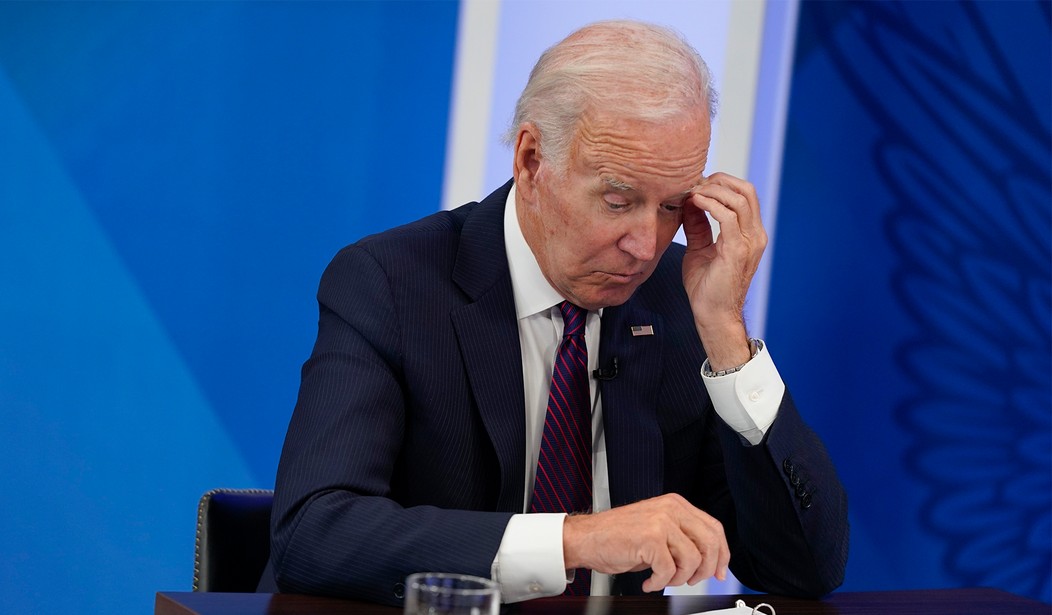Gee, this looks like a trend, no? The question, as it was earlier today with the sudden shifts in polling at CNN and NPR/Marist, is what’s actually trending. Is it voters or pollsters?
Before you answer that, here’s Quinnipiac with the biggest gap jump of the day, although on a longer time line. Two months ago, Quinnipiac reported Democrats leading in their national generic ballot polling, 47/43. Now that Election Day is less than a week away, Quinnipiac has found sudden Republican momentum to the tune of an eight-point flip in the gap. And this is among registered voters rather than likely voters:
House generic ballot- Quinnipiac
Now: 48-44% GOP
8/31: 47-43% Demhttps://t.co/ziBOGObMzk pic.twitter.com/yaxII033P8
— Steve Kornacki (@SteveKornacki) November 2, 2022
Why is Quinnipiac reporting RVs rather than LVs at this stage? Dunno, but here’s how Quinnipiac reports its latest iteration:
Among registered voters, if the election were today, 48 percent say they would want to see the Republican Party win control of the United States House of Representatives, while 44 percent say the Democratic Party.
This is a shift from a Quinnipiac University poll on August 31st when 47 percent said the Democratic Party and 43 percent said the Republican Party.
As for which party registered voters would want to see win control of the United States Senate, 48 percent say the Republican Party and 45 percent say the Democratic Party. This compares to August when 47 percent said the Democratic Party and 45 percent said the Republican Party.
Yeah, it’s a shift, all right. It looks like a political earthquake took place in the last two months, but from what? According to the polling memo, suddenly people are a lot more concerned about … inflation:
One week before Election Day, an increasing number of Americans say inflation (36 percent) is the most urgent issue facing the country today, up 9 percentage points since late August, according to a Quinnipiac (KWIN-uh-pea-ack) University national poll of adults released today.
It’s not just that it rose nine points, but that no other issue comes within 25 points of it. Here’s the issue priority breakdown in this poll, again among RVs:
- Inflation: 37%, 43% among indies
- Abortion: 10%, 8% among indies
- Crime, gun violence, election laws, climate change: 6%
It seems very likely that inflation was almost as significant a drive two months ago too, in comparison to other issues. But can someone explain why inflation concerns rose nine points in this period? Inflation has been at the same high rates since they dipped slightly after the spring. Even the most recent inflation reports show a kind of consistent status quo for the last few months. Here’s the BLS chart for the consumer price index, both overall and core, over the past year. Where’s the impetus for a sudden nine-point bump in the last two months?

The changes in the demos tell a strange story, too. Independents went from a 41/43 on the GOP to 49/34, a wild shift. Hispanics now give Republicans a 46/42 advantage, but two months ago were 30/59. Voters between ages 18 and 34 had been almost 2:1 in support of Democrats in August, 29/56, but now are within the MoE at 42/46. With all of that action, it seems odd that the overall gap only flipped by eight points.
Interestingly, some key demos didn’t budge at all. Black voters moved more toward Democrats over the same period, from 16/67 to 83/10 now. Women also stayed more or less the same, from 39/54 in August to 37/53 now.
Basically, this poll looks very suspicious on several levels, especially without any LV modeling despite Quinnipiac’s heavy emphasis on voter enthusiasm. Why ask these questions if you’re not going to model turnout based on the answers?
Among Republican registered voters, 60 percent say they are more motivated to vote, while 2 percent say they are less motivated, and 36 percent say they are just as motivated as usual. Among Democratic registered voters, 51 percent say they are more motivated to vote, while 7 percent say they are less motivated, and 40 percent say they are just as motivated as usual. Among independent registered voters, 47 percent say they are more motivated to vote, while 9 percent say they are less motivated, and 43 percent say they are just as motivated as usual.
“Who wants it more? It may come down to a tried-and-true sports axiom. The hungriest team wins the game, and the Republicans seem to have the edge,” added Malloy.
Perhaps the poll’s RV job approval rating gives an insight into the enthusiasm and modeling questions. Biden’s at 37/54 overall among registered voters, and 29/62 among independents, 36/54 among Hispanics, and has majority disapprovals in every age demo — and only gets into the 40s among seniors, 46/50.
To the extent that this poll tells us anything, it tells us that Democrats are looking at a red tsunami in a week. But the data is so weird in this instance, and Quinnipiac’s reporting so inconsistent, that it probably speaks more to the state of polling than anything else.








Join the conversation as a VIP Member